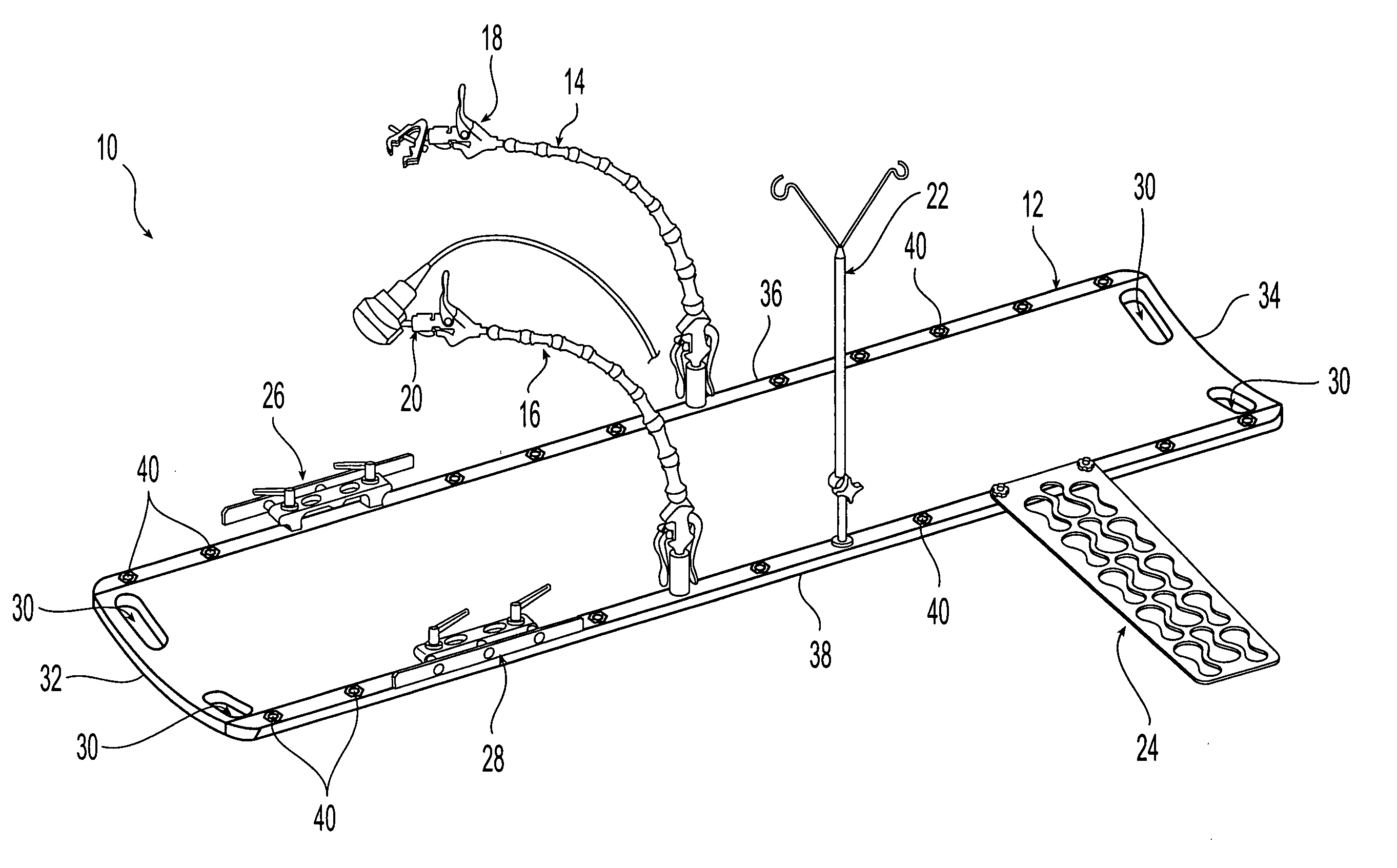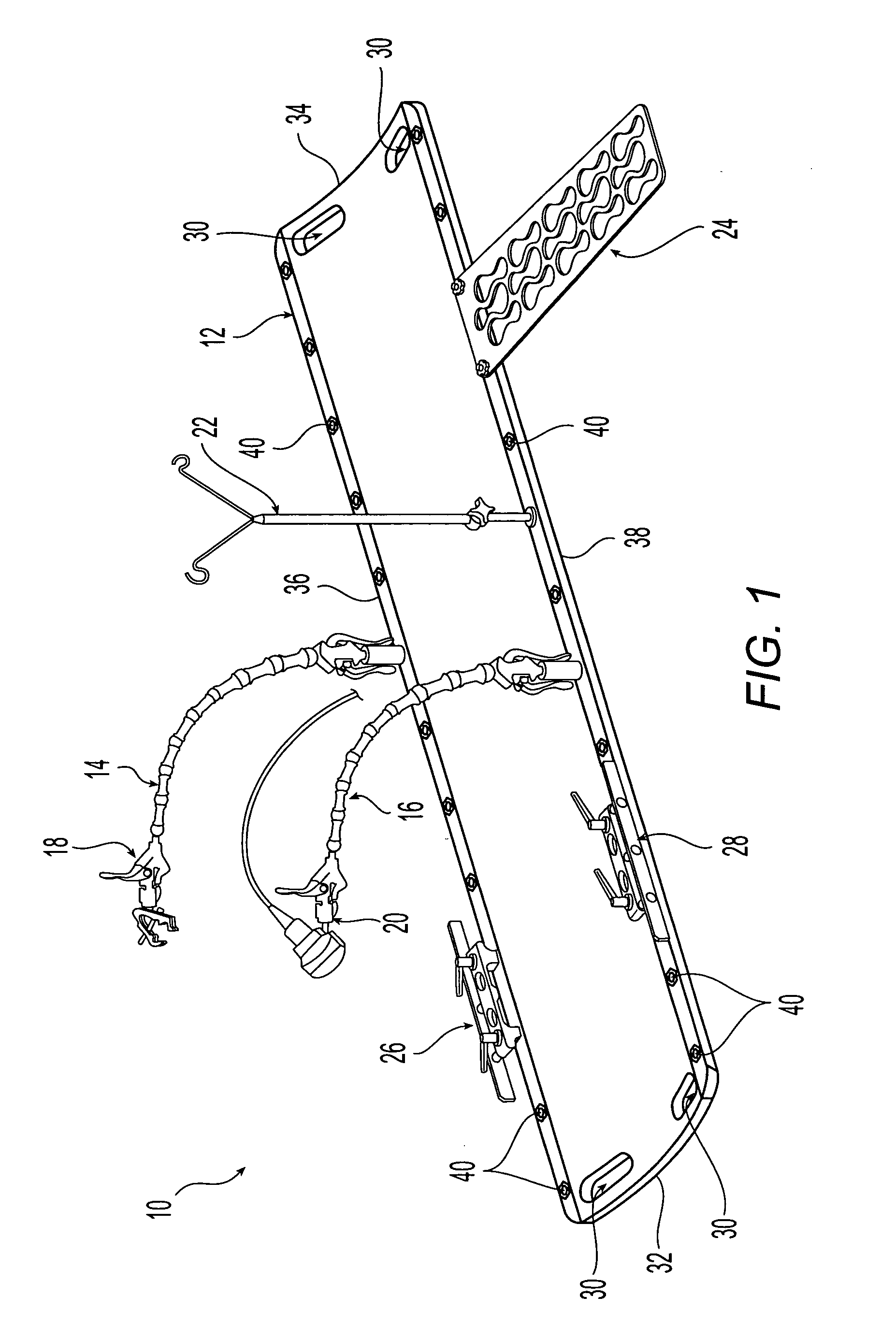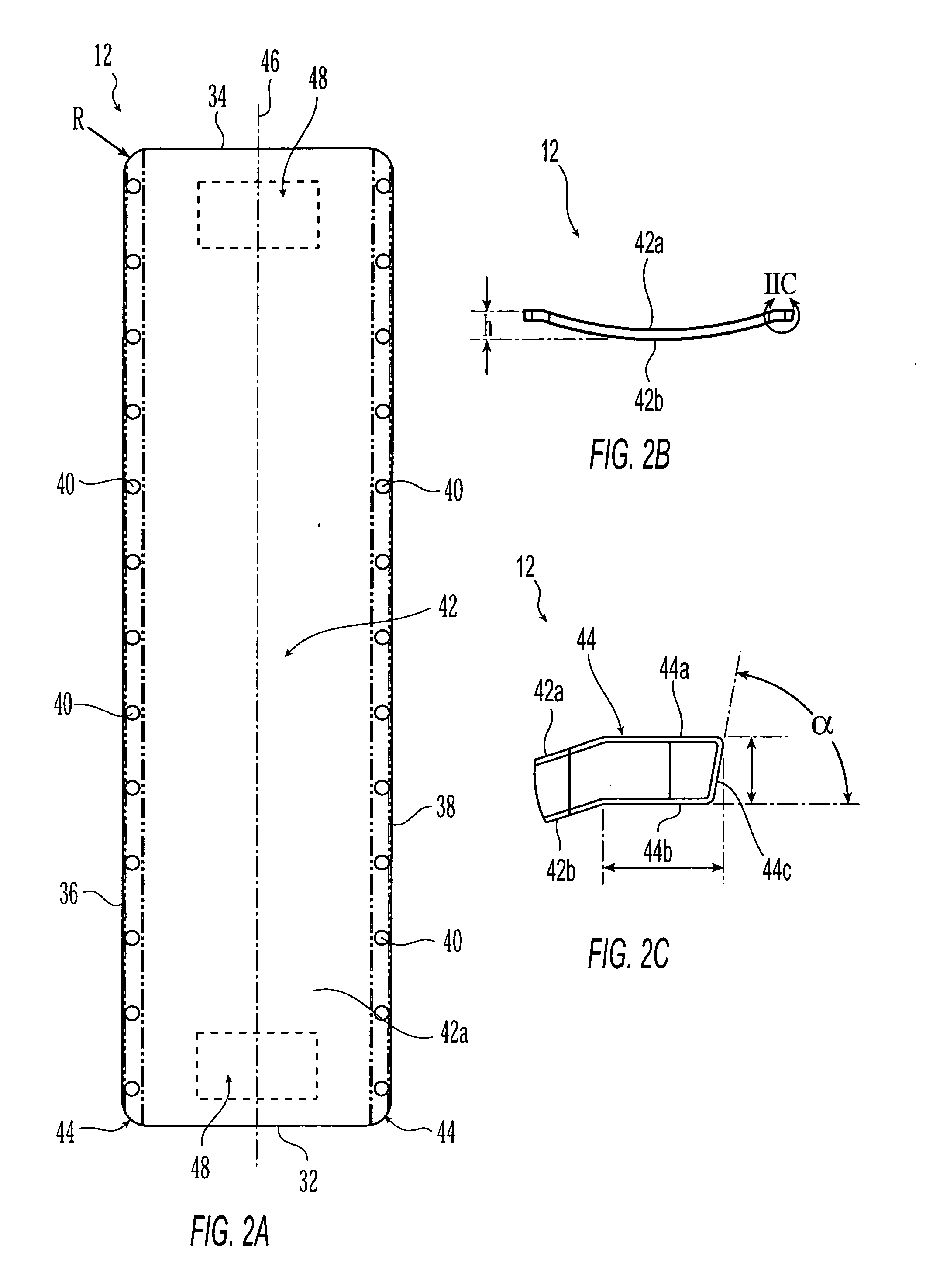Support system for use when performing medical imaging of a patient
a technology for supporting systems and patients, applied in the field of patient support racks, can solve the problems of increased personnel requirements, reduced ability to generally immobilize patients, and potential injuries to hospital personnel due to lifting
- Summary
- Abstract
- Description
- Claims
- Application Information
AI Technical Summary
Benefits of technology
Problems solved by technology
Method used
Image
Examples
Embodiment Construction
[0073] Terms such as “cephalad,”“caudal,”“upper” and “lower” as used herein are provided as non-limiting examples of the orientation of features.
[0074] Referring initially to FIG. 1, a support system 10 according to the present invention is shown with a variety of components coupled thereto. Support system 10 includes a tray 12, curvilinear articulating arm assemblies 14, 16, end effectors 18, 20 coupled to arms 14, 16, IV pole 22, arm board 24, and rail assemblies 26, 28. A variety of end effectors may be demountably attached to the ends of arms 14, 16 to assist a technician or practitioner with a medical / imaging procedure or provide other features useful with respect to a patient. End effector 18, for example, is configured as a bracket or clamp, while end effector 20 is configured as a self-centering abdominal probe bracket.
[0075] In a preferred exemplary embodiment, tray 12 includes two pairs of hold regions 30, each pair being disposed proximate a free cranial end 32 or free ...
PUM
 Login to View More
Login to View More Abstract
Description
Claims
Application Information
 Login to View More
Login to View More - R&D
- Intellectual Property
- Life Sciences
- Materials
- Tech Scout
- Unparalleled Data Quality
- Higher Quality Content
- 60% Fewer Hallucinations
Browse by: Latest US Patents, China's latest patents, Technical Efficacy Thesaurus, Application Domain, Technology Topic, Popular Technical Reports.
© 2025 PatSnap. All rights reserved.Legal|Privacy policy|Modern Slavery Act Transparency Statement|Sitemap|About US| Contact US: help@patsnap.com



